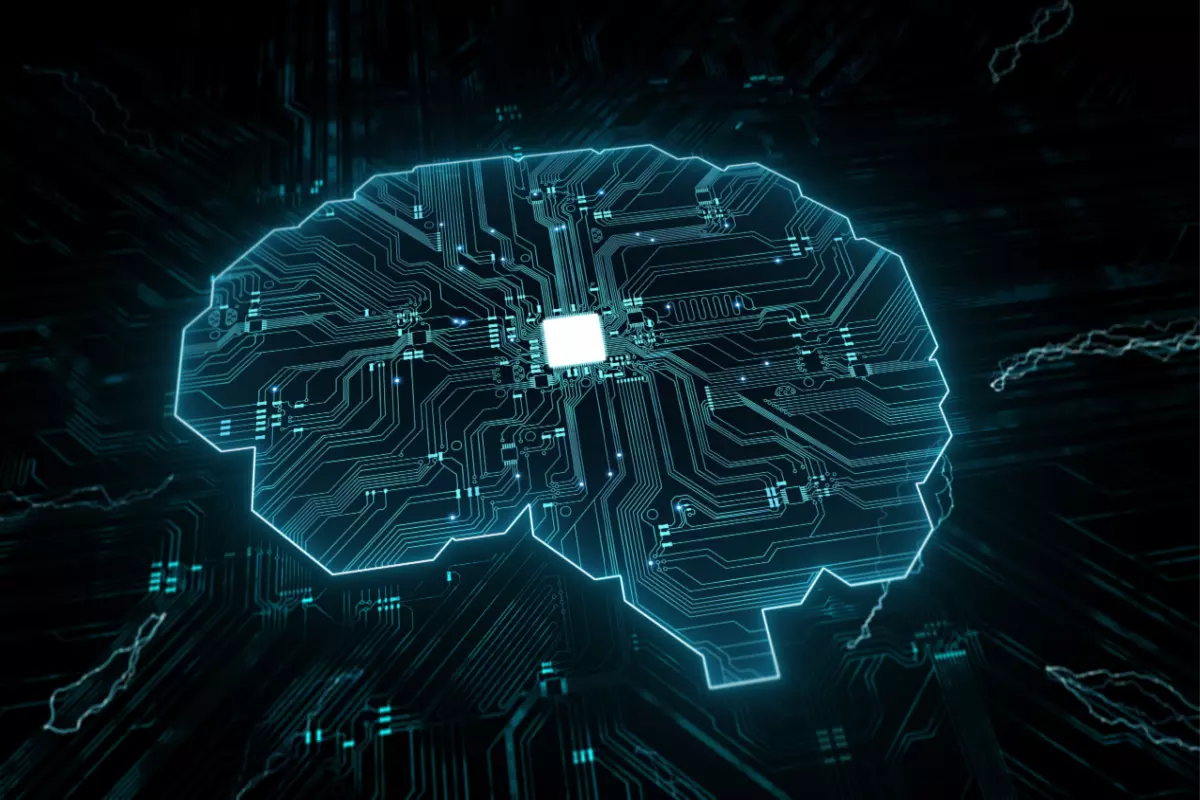What Is Classification in AI?
Imagine standing at the entrance of a massive library, its towering shelves filled with books from floor to ceiling. Your task is to organize these books into categories: fiction, non-fiction, mystery, and romance. It seems like a daunting task, right?
Now imagine if you could train a robot to do this job for you, learning from your examples and categorizing the entire library precisely and efficiently. AI classification does this but on a much more complex and larger scale.
AI data classification is a process where AI systems are trained to categorize data into predefined classes or labels. By learning from patterns in historical data, AI classification sorts through vast amounts of data, creating order from the digital chaos.
What Are the Types of Classification Algorithms Used in Artificial Intelligence?
In the classification of AI, there are various algorithms designed to meet specific needs and tackle unique challenges. The appropriate algorithm depends on the nature of the problem, the type of data available, and the desired outcome. Let’s delve deeper into some of the most commonly used types of AI classification.

Binary Classification
At its most basic, binary classification sorts data into one of two classes, effectively a yes/no decision. Think of binary classification as a light switch – either on or off.
One of the most prevalent examples of binary classification is email spam filters. Incoming emails are categorized as ‘spam’ or ‘not spam.’ Another practical example is medical testing, where a patient’s test result could be classified as ‘positive’ or ‘negative’ for a specific condition. Even in finance, credit card transactions are often classified as ‘fraudulent’ or ‘genuine,’ helping prevent financial fraud.
Multiclass Classification
When we expand the classification system to include more than two categories, we move into multiclass classification. The name itself is self-explanatory; ‘multi’ implies many, and in this case, it refers to the multiple categories or classes data can be sorted into.
A classic example of multiclass classification is the digit recognition system used by the United States Postal Service to read and interpret the handwritten digits on envelopes, such as ZIP codes or house numbers. This system has to sort handwritten digits on envelopes into ten classes, corresponding to digits from 0 to 9.
Another example would be classifying types of plants or animals based on their characteristics. These characteristics could include physical traits (color, shape, and size) for image classification, genetic traits for DNA analysis, or behavior prediction models.
For example, a machine learning model might classify birds based on beak shape, size, color, and habitat, each representing a different “feature” in the model.
Multilabel Classification
While binary and multiclass classifications assign data to one category, multilabel classification allows each data point to belong to several classes. The algorithm assigns multiple descriptive labels to each data point in this scenario.
Consider the case of a news organization that categorizes its articles. An article on climate change policy could be tagged under multiple topics such as ‘environment,’ ‘politics,’ and ‘policy.’ Similarly, a movie recommendation system might classify a single movie under several genres like ‘comedy,’ ‘drama,’ and ‘romance.’
How Are the Classification Algorithms Trained?
The training of AI classification algorithms might seem complex, but it’s akin to how humans learn. Think of how children learn to identify animals. They associate specific features, like stripes for tigers or trunks for elephants, from labeled images they’ve been shown.
Classification algorithms are trained in a remarkably similar way using a method called supervised learning.
Let’s explore the steps involved in training AI classification algorithms:
Model Learning
In this phase, the classification algorithm is given a dataset where every data point has been labeled with its correct class, like showing the child labeled images of animals. This is known as the training data. The algorithm’s task is to study this data and learn to associate the input features with the correct class labels.

For instance, in a binary classification problem of email spam detection, the features might include the frequency of certain words or phrases, the email’s metadata, and other factors. The algorithm learns the characteristics of spam and non-spam emails by studying thousands, even millions, of these examples. It’s essentially a pattern recognition exercise, where the algorithm learns to identify what patterns in the data are associated with each class.
Model Evaluation
Once the model has been trained, evaluating its performance is necessary. You wouldn’t let a student progress to the next grade without first passing an exam, would you? Similarly, a classification model’s education isn’t complete without testing.
For this, a separate dataset (the testing data) is used. This dataset is similar to the training data in that it contains labeled data points, which the model hasn’t seen before. The model attempts to classify these unseen data points, and its predictions are compared to the actual labels.
Based on this comparison, various metrics such as accuracy, precision, recall, or F1 score are calculated to gauge the model’s performance. For example, accuracy is the proportion of correct predictions the model makes. If the model classifies 90 out of 100 emails correctly, it has an accuracy of 90%.
If the model’s performance is unsatisfactory, it may be necessary to revisit the learning phase, perhaps by adding more training data, selecting different features, or tuning the model’s parameters.
What Are Some of the Best-Known Classification Algorithms?
The AI landscape hosts an impressive array of classification algorithms, each serving different purposes and providing distinct advantages. Their effectiveness can depend on factors such as the data’s complexity, the dataset’s size, and the problem at hand. Let’s introduce some of the most prominent players in this field:
Logistic Regression
Contrary to its name, logistic regression is indeed a classification algorithm. It’s beneficial for binary classification problems where the outcome can be one of two possible categories (e.g., ‘yes’ or ‘no’).
Consider a bank deciding whether or not to approve a loan application. Using logistic regression, the bank could classify applicants into two groups: ‘will default on loan’ and ‘will not default on loan,’ based on features such as credit history, annual income, and loan amount.
Decision Trees
Decision trees are intuitive and easy-to-understand classification algorithms that use a tree-like model of decisions. Each ‘branch’ represents a choice or condition, and each ‘leaf’ represents an outcome or class.

For example, a decision tree could help a restaurant decide whether to serve indoor or outdoor dining based on weather conditions. The branches would include conditions like ‘Is it raining?’ or ‘Is the temperature above 70 degrees?’ The leaves would be the final decisions, ‘Indoor dining’ or ‘Outdoor dining.’ If you want to learn more about decision trees, check out our statistic decision tree article.
Support Vector Machines (SVM)
Support vector machines are robust algorithms capable of handling binary and multiclass classification problems. They are particularly efficient when dealing with high-dimensional data, or in simpler terms, data with many features.
For instance, SVMs are frequently used in sentiment analysis, a form of text classification where each word or n-gram can be considered a feature. Here, an SVM can help classify customer reviews as ‘positive,’ ‘negative,’ or ‘neutral.’ This involves handling hundreds or thousands of dimensions due to the wide range of words and phrases that can influence sentiment.
Random Forests
Suppose you’re planning a vacation but can’t decide on the perfect destination. You ask several friends for their opinions. One friend recommends places based on your love for history, another suggests locations considering your preference for sunny beaches, and another, keeping your culinary adventures in mind.
Random forests in machine learning operate similarly. They are an ensemble of decision trees, just like your group of friends, each considering your preferences or ‘features’ (history, beaches, cuisine) to make a recommendation.
Each decision tree (friend) in the random forest gives a class output (recommended destination), and the final output is decided based on the majority of these individual outputs (where most friends suggest you go).
In this way, random forests combine the predictions of multiple ‘weak’ models (individual friend’s recommendation) to create a more accurate and ‘strong’ model (best travel destination for you).
Neural Networks
Neural networks are advanced algorithms inspired by the human brain’s structure. They are highly versatile and can learn complex patterns from large amounts of data, making them especially useful in deep learning.
A practical example is image recognition. Neural networks classify images, like identifying whether a picture is of a cat or a dog, based on the learned features from training images.
Practical Business Applications for AI-Driven Classification
Artificial intelligence classification is transforming various industries by providing efficient solutions to challenges that once seemed impossible. Here’s how several sectors are leveraging the power of AI classification to generate insights, increase efficiency, and enhance customer experiences:
Fraud Detection
AI classification is a formidable weapon against fraudulent activities in the banking and finance sector. Financial institutions use machine learning models to classify transactions as ‘fraudulent’ or ‘legitimate’ based on patterns in the data, such as transaction amount, location, time of the transaction, and the user’s typical behavior.
Businesses can protect their assets by identifying anomalous transactions that could signify fraud, take preventative measures sooner, and improve customer trust.
Customer Segmentation
Personalized marketing has become a cornerstone of successful business strategies, and AI classification is pivotal in achieving it. Companies can segment their customers into different groups or ‘classes’ based on various factors such as purchasing behavior, demographics, product preferences, and browsing history.
These insights enable businesses to tailor their marketing efforts to each segment, delivering personalized content more likely to resonate with the customer, thereby improving engagement and conversion rates.
Healthcare Diagnostics
In healthcare, AI classification is revolutionizing diagnostics and patient care. AI models can analyze medical images (like X-rays or MRIs) or patient data (like symptoms or genetic information) to classify conditions or diseases.
For instance, AI algorithms can analyze a chest X-ray to classify whether a patient has pneumonia. Such applications are enhancing the speed and accuracy of diagnostics, assisting medical professionals, and ultimately leading to better treatment plans.
Natural Language Processing (NLP)
Classification algorithms are the bedrock of many natural language processing tasks. A popular application is sentiment analysis, where pieces of text (such as customer reviews or social media posts) are classified as ‘positive,’ ‘negative,’ or ‘neutral.’
This can give businesses valuable insights into customer sentiment towards their products or services, allowing them to respond appropriately and proactively manage their brand image.
Conclusion
AI classification has made significant strides beyond theory and is revolutionizing diverse sectors. It is at the heart of fraud detection in finance, powers customer segmentation in marketing, assists in healthcare diagnostics, and provides valuable insights into natural language processing.
Whether binary, multiclass, multilabel classification, or algorithms like logistic regression, decision trees, or neural networks, each has a pivotal role in transforming raw data into actionable insights.As our journey in the world of AI progresses, join us in our continued exploration of machine learning topics in future posts. Keep learning, keep exploring, and embrace AI as your navigator in the digital age!
Try our real-time predictive modeling engine and create your first custom model in five minutes – no coding necessary!
- Fully operational AI with automated model building and deployment
- Data preprocessing and analysis tools
- Custom modeling solutions
- Actionable analytics
- A personalized approach to real-time decision making
Table of Contents
- What Are the Types of Classification Algorithms Used in Artificial Intelligence?
- Binary Classification
- Multiclass Classification
- Multilabel Classification
- How Are the Classification Algorithms Trained?
- Model Learning
- Model Evaluation
- What Are Some of the Best-Known Classification Algorithms?
- Logistic Regression
- Decision Trees
- Support Vector Machines (SVM)
- Random Forests
- Neural Networks
- Practical Business Applications for AI-Driven Classification
- Fraud Detection
- Customer Segmentation
- Healthcare Diagnostics
- Natural Language Processing (NLP)
- Conclusion



